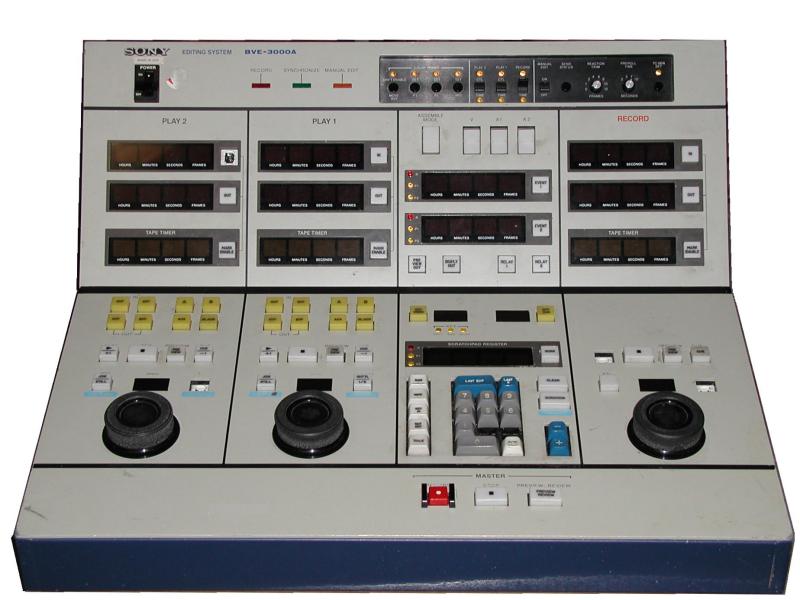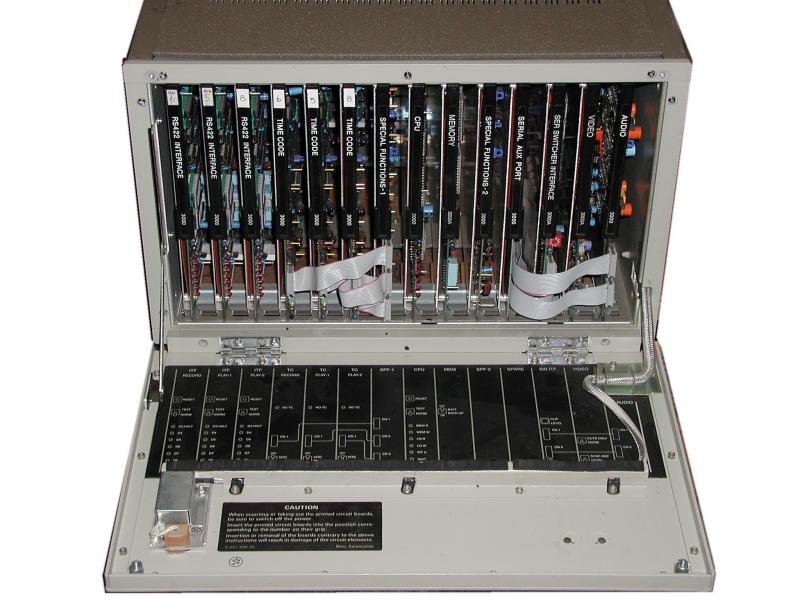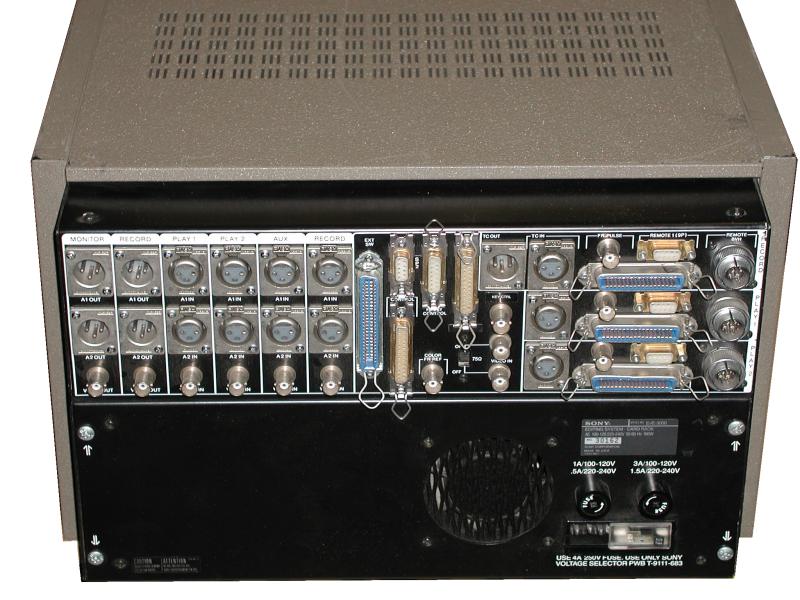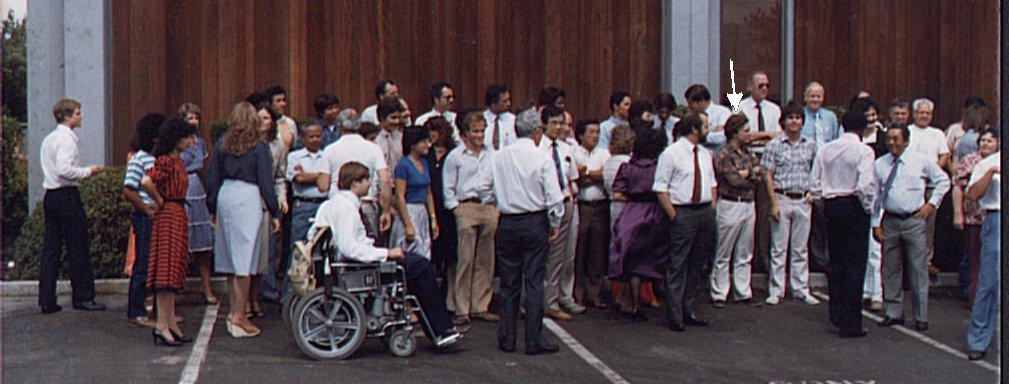| LabGuy's World:Sony
BVE-3000A Editing Controller
New Addition 02.03.11   
1984: Sony BVE-3000A Editing Controller Now, why would this thing excite me so? Probably because I personally tested and aligned this very unit at the Sony Tech Center, located in Palo Alto California. That's why! My original test stamp (#80) is still on several of the PCB's in this unit. This feller is in sorry shape cosmetically. But, that should not prevent it from working. I will need to round up a set of VTRs before I can test it, but with my connections, that should be no problem. The first photo shows the control console. This was attached to the main unit by a 25 conductor cable. Both units are self powered from AC. The left side of the panel controls the players and the right side controls the recorder. The operator or editor enters the desired in and out points for one or both playback vtrs. Next, the operator sets up the in and out point, whether to insert or assemble edit, selects what type of video effect (cut / wipe / dissolve / etc.), how long the effect will last, and so on. The central portion of the console is a specialized calculator that helps the operator to make complex edit decisions. All in all, a very fancy system. We won't mention that the modern equivalent of this system now fits in your shirt pocket and talks to the decks by digital infrared beams. . . . An edit controller is a kind of specialized computer. It is attached to two or three VTRs. One or two players and at least one recorder. All digital dialog is over either a dedicated Sony link or the more general purpose RS-422 link. Looking at the center photo, the first three printed circuit boards (PCBs), going from left to right, are the machine communications processors. The next three cards read or write time code information to / from the VTRs as necessary. Next, cards six through nine are the general purpose computer section of the controller followed by the general purpose serial communications port (Yes! an entire board for one serial port!). The last three boards form a broadcast quality audio / video effects switcher. It can switch between sources, dissolve between them and even perform several different wipe patterns too! All with audio follow, or not, as the Editor sees fit. The computer in this unit is a venerable Intel 8085 running at 2 Mhz with less than 64K of ROM / RAM (combined) memory! The RS-422 boards each have a 4 Mhz Zilog Z80 on them at least. The edit decision list (EDL) could be dumped from this unit to (are you ready?) punched paper tape! It was the medium of the day through out the late 1970s and early 1980s. Is that cool or what? 
The Sony Tech Center Gang getting ready for the company picture in 1984! This fourth photo is of all my old friends, and you know who you are, at the old Sony Tech Center in Palo Alto California in 1984. Where are you all now? Sadly, the tech center is no longer located at this site. If you recognize yourself in the photo be sure to write and say hello. All of these people were involved with the BVE-3000A production or engineering and this is not even everyone possible! I placed a convenient arrow in the picture for those of you who are struggling to figure out just which one is LabGuy. . .(Groovy shirt, LabGuy!) Needed: Complete Service Manual. [HOME]......[VIDEO RECORDERS MUSEUM] Last updated: January 09, 2005 |